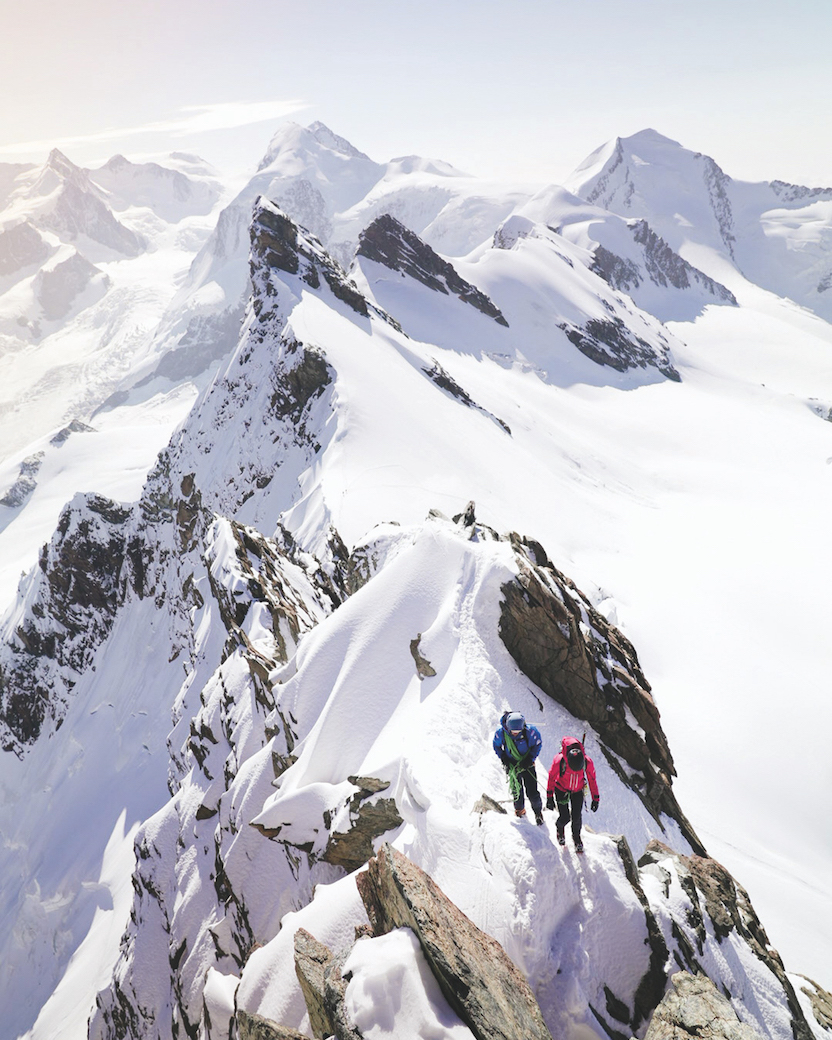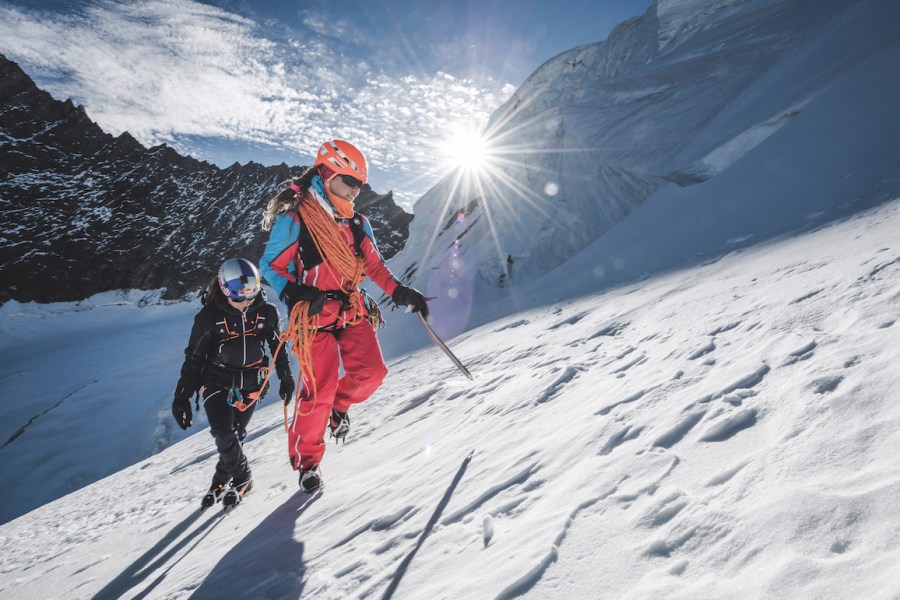A century and a half after Lucy Walker became the first woman to climb the Matterhorn, British mountaineer Olivia Jane Wood reflects on the lure of the high peaks.
This advertising feature is sponsored by our friends at Mammut.
On July the 22nd, 1871, Brit Lucy Walker became the first woman to reach the summit of the Matterhorn. Lucy was undeterred by the attitudes of the day, which still saw a woman’s place as firmly in the home, she made it to the top of the 4,478m peak in style. (Read our feature on Lucy Walker’s extraordinary life here).
150 years later, in 2021, the Swiss outdoor brand Mammut spent the summer of 2021 celebrating Lucy Walker’s incredible achievement through the 100% Women Peak Challenge. This campaign, delivered in partnership with Switzerland Tourism, Swiss Alpine Club and Swiss Mountain Guide Association, has called on all-women teams to climb Switzerland’s highest peaks. The aim has been to increase the visibility of inspiring female alpinists and to attract more women to mountaineering.
British mountaineer and Mammut ambassador Olivia Jane Wood has played a central role in the campaign. Here she talks to The Great Outdoors about her love for the high peaks – and how Lucy Walker’s legacy has inspired her.
Main image: Climbing in Switzerland. Photo: Mammut
You grew up in Zermatt. As a child, were you obsessed with the outdoors?
Yeah, I guess I was. I’d literally throw myself into anything, and maybe that was because I was surrounded by these big mountains growing up. As a kid, I’d just play in the mountains, or go down to the river, and I’d never feel scared.
Were there any female climbers you looked up to when you were growing up?
There were a lot of female climbers in magazines and on the television when I was growing up, but I specifically remember watching a documentary about five years ago with Gwen Moffat in it and she really inspired me.
Back when Lucy Walker climbed the Matterhorn 150 years ago, it was seen as controversial for her to be climbing up there. What are the attitudes to female climbers these days?
I feel it’s a lot more the norm now for female mountaineers and climbers to scale big mountains. I believe females have the same capabilities as males in the mountains—and females bring a great vibe to mountaineering and climbing in this century.
When did you go from just knocking around the outdoors as a kid to taking mountaineering seriously?
I climbed a lot when I was a kid with my grandfather. He’d take me up to the Lake District all the time. I never did any 4,000m peaks as a kid in Zermatt, I did plenty of hiking and rock climbing. But then in university, I joined the mountaineering and climbing club, and that’s where it all really started. My first big alpine route was about five years ago, and I completely fell in love with it, because it was so dangerous.
How does something like that differ from a day in the Lakes?
The risk is just… I don’t know… maybe ten times more than something like taking a walk up Scafell? I don’t know if words can describe it. It makes me speechless every time I get out there. Those routes out in Chamonix or the Dolomites… they’re big. It’s out of this world.
You have your sights set on the Matterhorn one day – how do you train for serious alpine routes?
I’ve got to make myself fit enough to give myself the best chance to summit. It’s a lot easier to train with a goal. I’ll be prioritising mountain fitness and efficient movement skills. And then I’ll do strength training and loads of cardio-vascular training, to help with the altitude—plenty of big, long days on the hills.
How does the altitude affect things?
It affects each individual differently. When I was in Nepal, there was a guy who was with us who started showing signs of pulmonary edema, which is where fluid starts to build up in the lungs, at around 4,800m. That’s one of the biggest problems, and it can actually kill you if it’s not treated correctly. And then there’s headaches and being out of breath—so that makes everything a lot harder. So the fitter I am, the better.
Do you enjoy pushing yourself to the limit?
Yes. But I definitely know the risks now. Even though these experiences build your confidence, you can’t be over-confident. I used to always think, “Okay, we’re at the top now, it’s so easy to get down.” But it’s not—going down is the most dangerous part.

Olivia on the Breithorn Traverse. Photo: Sam Walker
These huge mountains are pretty serious. How do you cope with the risks?
You just don’t know what’s going to happen. But I think the human mind, or at least my mind, needs these adventures. I need to take these risks. It just makes sense to me. We live in a society of performance, where it’s cool to push boundaries and limits—and that’s what I love about adventure. Climbing a mountain like the Matterhorn is another way to push my boundaries.
How do you deal mentally with something like that? It must get pretty daunting at points.
There’s only one way up, and one way down, so I just try and stay very focussed, and very calm. I don’t over-think too much. Being a little bit scared is healthy, but not to the point where you freeze up. I try to just enjoy it.
Do you have a favourite place in the UK you like to climb?
In winter it’d be in Scotland. I’ve not done loads of winter stuff up there, but that’s the place to build confidence in winter mountaineering stuff. But then there’s the Lakes. I love the Langdale PIkes for climbing—there are some beautiful crags there to climb on a nice sunny evening. I love Wales too, but I’ve not been able to enjoy it as much.
Where’s the buzz of all this for you? Is it when you get back from a big adventure? Or is it when you’re out there?
There is that feeling at the end—I usually get a bit shell shocked, and I need a bit of time to get my head around what I’ve just done—but for me, it’s doing it. It’s the adrenaline. That’s what I crave in my life.








